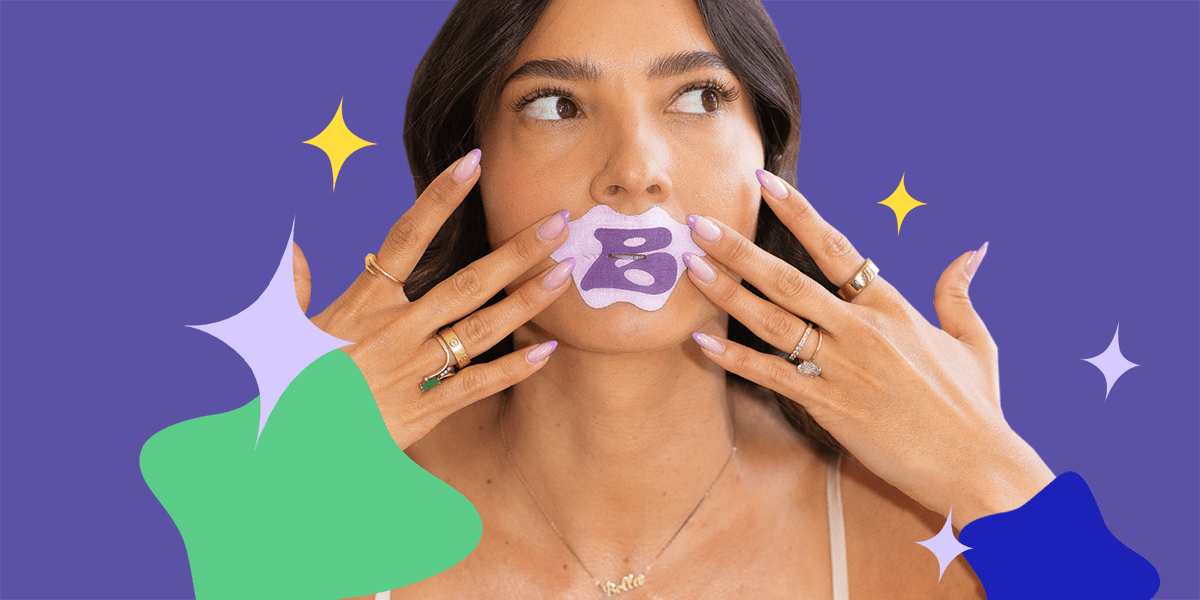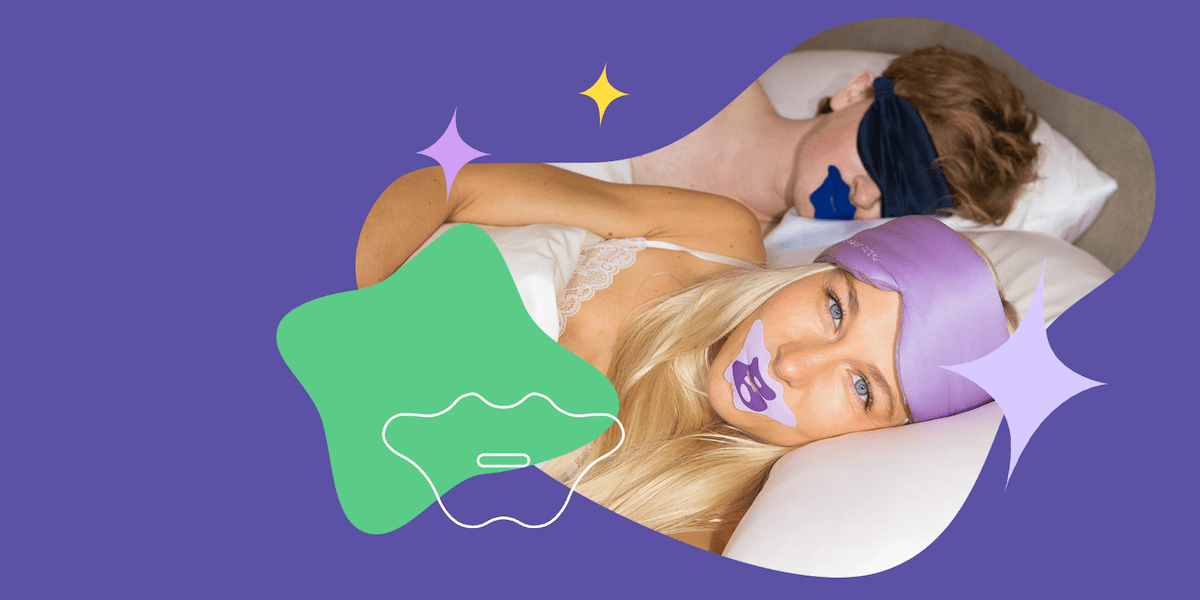The benefits of nose breathing

Too Lazy to Read? Here’s the Glowdown.
1. Mouth breathing is super common — but that doesn’t mean it’s good for your health, sleep, or performance.
2. Nose breathing increases oxygen efficiency, helps you sleep deeper, calms your nervous system, and sharpens your focus.
3. Switching how you breathe during the day (like while walking or working) and at night (using mouth tape) is easier than you think — and you might not even realize you're mouth breathing yet.
Intro: Wait... What’s the Big Deal About How We Breathe?
Breathing is something we do over 20,000 times a day — without thinking about it. But how you breathe matters more than you realize.
There are two ways air can enter your body:
🫁 Through your mouth — fast, unfiltered, often shallow.
👃 Through your nose — slower, cleaner, and way more efficient.
One supports recovery, deep sleep, and mental clarity.
The other is basically a shortcut that leaves your system working harder for less.
And here's the kicker: most people don't know that chronic mouth breathing is linked to things like fatigue, anxiety, poor sleep, jaw misalignment, and even reduced performance in workouts. But the science is catching up — and so is awareness.
1. Why Mouth Breathing Feels Normal (But Isn’t Optimal)
Mouth breathing is common. But that doesn’t mean it’s harmless. Most people don’t even realize they’re doing it — especially during sleep.
Here’s why it happens:
- Blocked nasal passages – Allergies, colds, or chronic congestion make nose breathing harder.
- Stress & anxiety – Shallow, chest-based breathing through the mouth is your body’s go-to during fight-or-flight.
- Poor sleep posture – Sleeping on your back with poor head or neck support often leads to open-mouth breathing.
- Lack of awareness – We’re never taught that nose breathing is better — so we default without thinking.
- Childhood habit – Chronic mouth breathing as a kid can impact jaw structure and facial development.
👉 Research published in Respiratory Physiology & Neurobiology shows chronic mouth breathing can reduce oxygen uptake by up to 20%. That’s not nothing.
2. Why Nose Breathing Is a Performance Tool (Not Just a Wellness Buzzword)
Think of nose breathing as a built-in performance enhancer — no caffeine or supplements required.
Here’s what it does:
- Supports deeper, more restorative sleep – By encouraging slower, diaphragmatic breathing and reducing snoring.
- Improves oxygen efficiency – Allows better oxygen exchange and delivery to muscles and brain.
- Lowers resting heart rate (RHR) – Helps your body recover more efficiently overnight.
- Reduces cortisol levels – Calms your stress response system.
- Increases nitric oxide production – Boosts circulation and immune support.
🧪 A 2020 study published in the International Journal of Exercise Science found that trained runners who practiced nose breathing during aerobic activity had significantly lower respiratory rates and improved ventilation efficiency compared to those using mouth breathing.
And it tracks — elite athletes like Iga Świątek (world #2 tennis player) and Erling Haaland (striker for Manchester City) have talked about how breathwork is a key part of their performance and recovery rituals. They’re not just training harder — they’re breathing smarter.
3. Case Study: Olivia Didn’t Know She Was Mouth Breathing — Until Everything Clicked
Olivia is a busy 30-something, not unlike most of us. She tries to eat healthy, move daily, and prioritize sleep, but something always feels off. She works full-time, trains a few days a week, and generally thinks she’s “doing fine.” But here’s a snapshot of her week:
- Morning: Wakes up with a dry mouth and jaw tightness. Her Oura Ring shows she got 7.5 hours, but she still feels wrecked.
- Midday: She’s edgy, low on energy, and needs 2–3 coffees just to feel switched on.
- Evening: She’s too wired to sleep, scrolls on her phone, and crashes with her mouth open.
So what changed?
She committed to one week of intentional nose breathing.
She started walking with her mouth closed and added a short breathwork session before bed. At night, she gently taped her mouth (👀 yes — it’s a thing) to keep airflow nasal.
After just a few nights, her sleep felt deeper. Her morning fog lifted. Her RHR dropped by 4 bpm. She had more energy for workouts — and less brain fog during meetings. Her body finally shifted into recovery mode — and the difference was obvious.
4. How to Shift From Mouth to Nose (Without Stressing About It)
 You don’t need to overhaul your life — just start small. These are the building blocks:
You don’t need to overhaul your life — just start small. These are the building blocks:- Step 1: Daytime Awareness - Practice breathing through your nose while walking, reading, or working. Try 4–5 minutes at a time, building up. Bonus: pair with breath holds or box breathing.
- Step 2: Pre-Bed Reset - Add 5 minutes of nose breathing to your wind-down routine — no tech, just breath. You can pair it with light stretching or a warm shower.
- Step 3: Support While You Sleep - If you’re mouth breathing at night, try gently taping your mouth to encourage nasal breathing. Yes, really.
We designed Bedrock Mouth Tape to help — it’s soft, secure, and is designed to be comfortable, breathable, and beginner-friendly.
Your Takeaway
1. Your breath is free. But when you start using it with intention, it becomes a real superpower.
2. So what does that actually get you?
- Better recovery. Deeper sleep. More focus. Less anxiety.
- All from something you’re already doing — just differently.
3. It’s not about being perfect. It’s about creating moments of awareness, day and night, and letting your body do what it was designed to do.
4. Let’s breathe better — together!




Comments
Asia —
How does nose breathing support oxygenation to the muscle? Can you please explain?